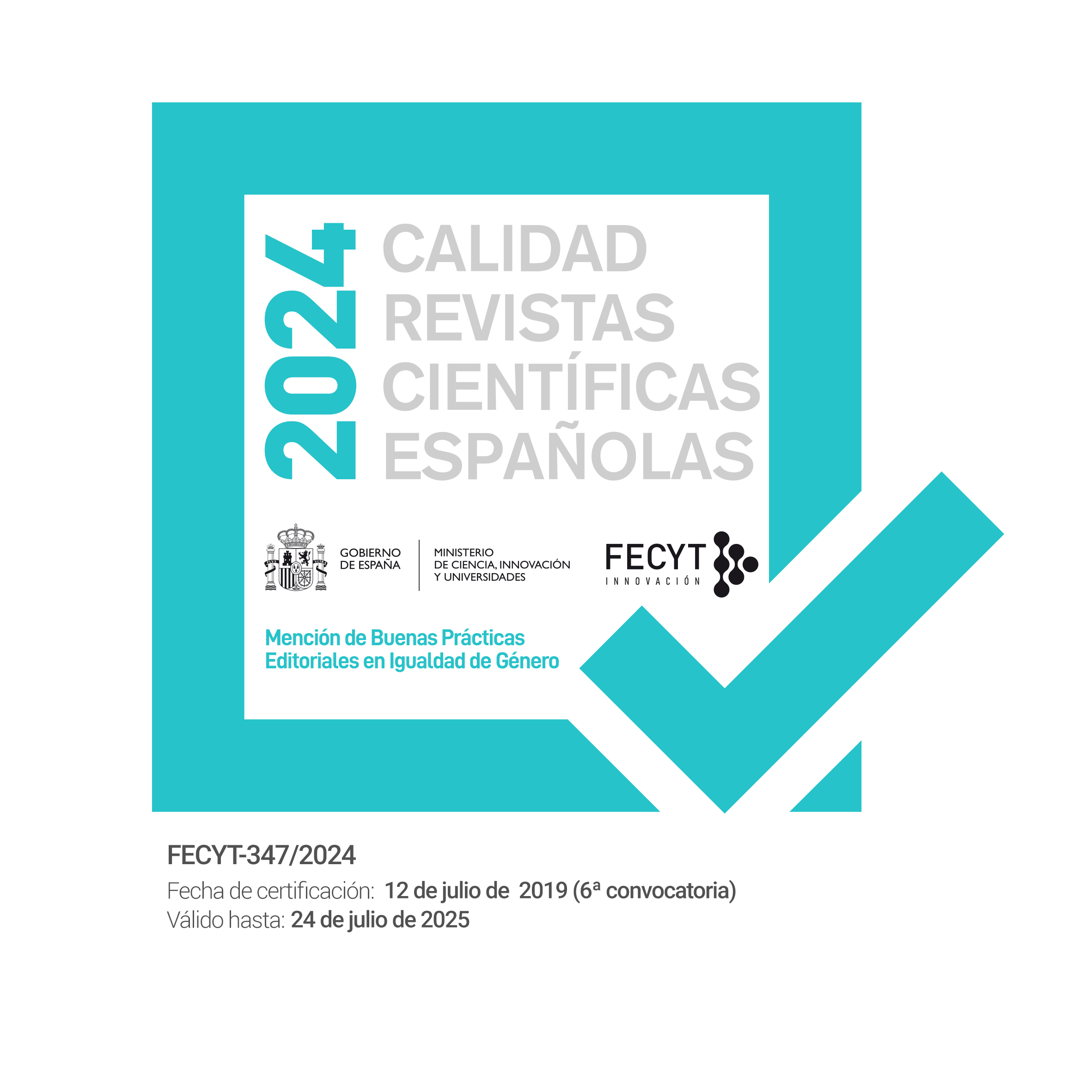Con flores a María. The Resignification of Images as a Strategy of Feminist Artivism
DOI:
https://doi.org/10.5944/etfvii.11.2023.36361Keywords:
Artivism; Feminism; Blasphemy; Iconoclasm; Transgression; Immaculate Conception; Virgin MaryAbstract
In 2018, within pre-electoral climate of the general elections, a work by the artist Charo Corrales suffered an iconoclastic act. It was the work entitled Con flores a María, where the artist presented her face instead of that of the Inmaculada Concepción de Aranjuez de Murillo. With the photomontage, Corrales is shown as an Inmaculada masturbating. The work was part of a collective exhibition under the title Maculadas sin remedio. In the present text the relations between art, transgression and iconoclasm are studied, understanding the resignification of religious images as a strategy of feminist artivism. In the first part, the key theoretical elements are provided to be able to carry out this type of analysis, as well as the pertinent definitions and clarifications regarding the concepts of transgression and blasphemy. Subsequently, the work of Corrales is analyzed in its context, to later show other artistic manifestations in which the figure of María is reinterpreted. Finally, a reflection on iconoclasm and censorship is carried out.
Downloads
References
Adams, Gwendolyn M.: Invisible Scars: The Feminist Rhetoric of Valie Export, (Tesis doctoral inédita), York University, 1998.
Alexandrova, Alena: Breaking Resemblance: The Role of Religious Motifs in Contemporary Art. New York, Fordham University Press, 2017.
Barthes, Roland: Mitologías. México, Siglo XXI, 1980.
Braddock, Christopher: «Blasphemy and the Art of the Political and Devotional», en Coleman Burns, Elizabeth y FernandesDias, Maria Suzette (eds.): Negotiating the Sacred II: Blasphemy and Sacrilege in the Arts. The Australian National University Press, Canberra, 2008, pp. 147-159.
Cacho, Marta: «Una embajada concepcionista en Roma y un lienzo conmemorativo de Louis Cousin (1633)», en Colomer, José Luis (dir.): Arte y diplomacia hispánica en el siglo XVII. Madrid, Centro de Estudios Europa Hispánica, 2003, pp. 415-428.
Deepwell, Katy (ed.): Feminist Art Activisms and Artivisms. Plural, Amsterdam, 2020.
Doménech García, Sergi: La imagen de la Mujer del Apocalipsis en Nueva España y sus implicaciones culturales, (Tesis doctoral inédita), Universitat de València, 2013.
Douglas, Mary: Pureza y peligro. Un análisis de los conceptos de contaminación y tabú. México, Siglo XXI Editores, 1973.
Dubin, Steven C.: Arresting Images: Impolitic Art and Uncivil Actions. New York London, Routledge, 1992.
Fernandes-Dias, Maria-Suzette: «Les Fees On Soif: Feminist, Iconoclastic or Blasphemous?», en Burns Coleman, Elizabeth y Fernandes-Dias, Maria-Suzette (eds.): Negotiating the Sacred II: Blasphemy and Sacrilege in the Arts. Canberra, The Australian National University Press, 2008, pp. 81-91.
Freedberg, David: El poder de las imágenes. Estudios sobre la historia y el poder de la respuesta. Madrid, Cátedra, 2021.
Freedberg, David: Iconoclasia. Historia y psicología de la violencia contra las imágenes. Vitoria-Gasteitz, Sans Soleil Ediciones, 2017.
Grana, Romina (Coord.): Discursos, mujeres y artes. ¿Construyendo o derribando fronteras?. Madrid, Dykinson, 2021.
Kauffman, Linda S.: Malas y perversos. Fantasías en la cultura y el arte contemporáneo. Madrid, Cátedra-Universitat de València, 2000.
Kristeva, Julia: Poderes de la perversión. México, Siglo XXI, 2004.
Lawton, David: Blasphemy. Philadelphia, University of Pennsylvania Pres, 1993.
Locke, Maryel: «A History of the Public Controversy», en Locke, Maryel and Warren, Charles (eds.): Jean-Luc Godard’s Hail Mary: Women and the Sacred in Film. Carbondale and Edwardsville, Southern Illinois University Press, 1993, pp. 1-9.
McFarlane, Kyla: «Incisions and Excesses», en Jackson, Marck y Breakwell, Ian (eds.): Votive: Sacred and Ecstatic Bodies. Adam Art Gallery - Victoria University of Wellington, Wellington, 2002, pp. 10-19.
Plate, S. Brent: Blasphemy: Art that Offends. London, Black dog publishing, 2006.
Rodríguez-Cunill, Inmaculada et alii.: Maculadas sin remedio. Ayuntamiento de Sevilla, ICAS, 2019.
Rogowski, Lukasz: «Sociology of Iconoclasm: Distrut of Visuality in the Digital Age», en Regev, Nathasohn y Dennis, Zuev (eds.): Sociology of the Visual Sphere. New York, Routledge, 2013, pp. 42-56.
Solberg, Emma Maggie: Virgin Whore. Ithaca-London, Cornell University Press, 2018
Warner, Marina: Tú sola entre las mujeres. El mito y el culto de la Virgen María. Madrid, Taurus, 1992.
Downloads
Published
How to Cite
Issue
Section
License

This work is licensed under a Creative Commons Attribution-NonCommercial 4.0 International License.







